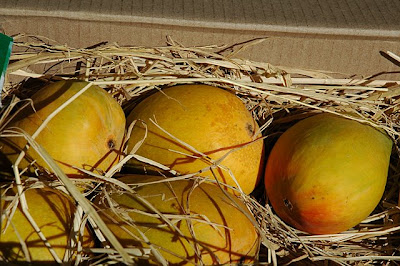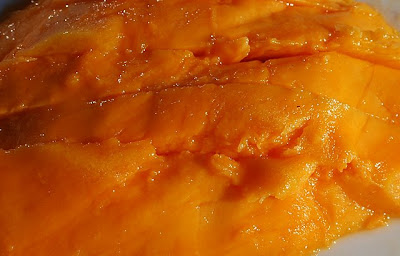June 7 my grafted Lophophora williamsii v. caespitosa plant could celebrate its 4th anniversary on top of its Trichocereus bridgesii stock. After four years the main head has grown to a width of 6 cm (~2.4'') and the scion is more than 14 cm (>5.5'') wide in total.

Lophophora williamsii v. caespitosa grafted on Trichocereus stock
Unfortunately the plant was maimed by spider mites last year. I didn't check my plants for mites before leaving them unattended for several weeks during my summer holiday. When I returned the damage was done and much of the plant ended up severely scarred.

Spider mite damage with new growth
Fortunately the spider mites stayed off most of my other plants, and the scarred epidermis of the grafted Lophophora williamsii v. caespitosa will soon be replaced by new growth.
To avoid spider mites I'm now showering my plants as often as the weather and my patience permit ;-) Any remaining mites are sprayed with isopropyl alcohol on sight. So far this treatment has kept my plants safe from mites, but the big test will be the coming hot summer months where the plants are left on their own to a great extent.

Lophophora caespitosa scarred by spider mites
As always I’m fascinated with the explosive growth induced by the Trichocereus stock – for comparison you can check the posts on the same plant one, two, and three years ago.
Sunday, June 15, 2008
Lophophora williamsii v. caespitosa graft – 4th anniversary
Sunday, June 01, 2008
Munching on alphonso mangoes in Mumbai
This is very much off-topic, I know, but I’m just home from Mumbai (Bombay), India and have to share this ;-) I visited Mumbai for two weeks, just before the monsoon set in. As it turned out this period coincided with the last part of the alphonso mango season. I had never tasted alphonso mangoes before, but their warm, deep orange-yellow color (almost like an egg yolk), the smooth, firm texture of the fruit flesh (not fibrous at all, reminiscent of an almost ripe avocado), and their sweet, mild, mild, mild bergamot-like taste immediately won me over. I ate alphonso mangoes whenever I could find them and even brought home a dozen ;-)
A box of alphonso mangoes
Alphonso mangoes surrounded by straw
Alphonso mangoes close-up
Alphonso mango ready to eat
All Time Most Popular Posts
-
Lophophora williamsii (peyote) populations have diminished in large areas of South Texas where peyoteros harvest the cactus for ceremonial ...
-
On various occasions I've been asked what growing media I'm using for my cactus plants. I don't have a set soil mix recipe as su...
-
Below is a list of retailers/nurseries selling cactus seed and plants. I've only listed vendors I've done business with. If you ar...
-
Most cacti are easily grown from seed - and with a little patience and care they can be grown into beautiful plants. Lophophora williamsi...
-
In last month’s post on the troubled Texan peyoteros I referred to Anderson’s article on the peyote situation in Texas. Given the importanc...
-
Yet another slightly off topic and probably not entirely politically correct post, but I couldn’t help noticing the similarity of my monstr...
-
Flowering stand of San Pedro cacti (Trichocereus pachanoi) To me the main draw of the San Pedro cactus ( Trichocereus pachanoi (syn. Ech...
-
In the June 2008 issue of the Cactus & Co magazine Jaroslav Šnicer, Jaroslav Bohata, and Vojtěch Myšák described a new Lophophora spec...
-
There seems to be an increased focus on the alarming Texas peyote situation. A couple of weeks ago the Houston Press published a mournful, i...
-
I spent two weeks working in Delhi, India during January. I had one weekend off and had planned to spend it in Delhi at my own leisure, but ...






















